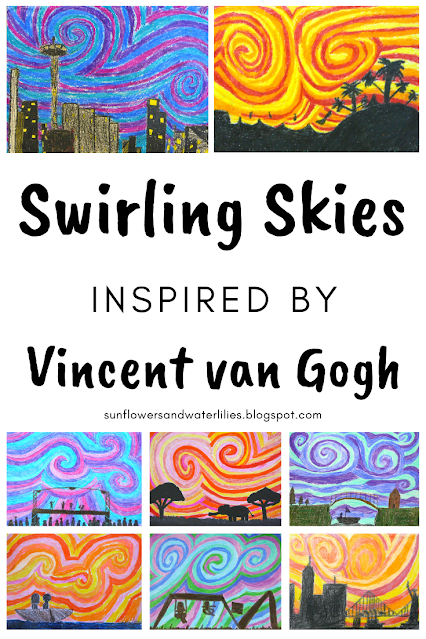One-Point Perspective
One-Point Perspective is such an important drawing skill to learn!
We work on understanding the basics of perspective and size variation throughout the elementary grades. Then around 5th grade, students are ready to try their hand at one-point perspective!
After learning about the technique, students draw any scene they like using this new skill.
Step 1: Introduction to Perspective
We first review the concept of Perspective – how things
are drawn smaller when they are farther away. We recall projects we've done in previous years that used size variation. Students also complete a simple one-point perspective worksheet as a preassessment prior to beginning this project.
We take some time to look at how one-point perspective has been used throughout art history. Seeing the skill in action helps get the students motivated.
Step 2: Practicing Ideas
After students understand the concept of perspective, we are ready to start drawing!
We use rulers to divide the back of our drawing paper into four quarters, creating four thumbnail sketches. In the first thumbnail, I demonstrate how to draw a street and a row of trees using one-point perspective. I mention that the street could instead be a river or train tracks. Students draw along with me on their papers. In the second thumbnail, I demonstrate how to draw a street with a row of buildings using one-point perspective, as students draw along.
Students then practice two new, original ideas for scenes
that use perspective in thumbnails #3 and #4. They choose their favorite of the two ideas to use for their final project.
Step 3: Creating the Drawings
After reviewing the "rules" of one-point perspective, the vanishing point, etc., students beging drawing their best idea on the front of their papers, strictly adhering to the rules of perspective. Once finished, students erase any perspective guidelines they no longer need, and outline their drawings with fine permanent marker.
Step 4: Coloring and Painting
We paint our perspective scenes with watercolor paints. However, some areas are a bit too small and too detailed for the paint, so students start by coloring these details with crayons. Crayons can also be used to add texture - drawing green lines in grass and blue waves in water. When we paint over these crayon marks, it really helps add interest to our drawings.
Once details have been drawn and colored with crayons, students paint the large areas of their artwork. These come out so nice, and the best part is that each drawing is unique!







Comments
Post a Comment